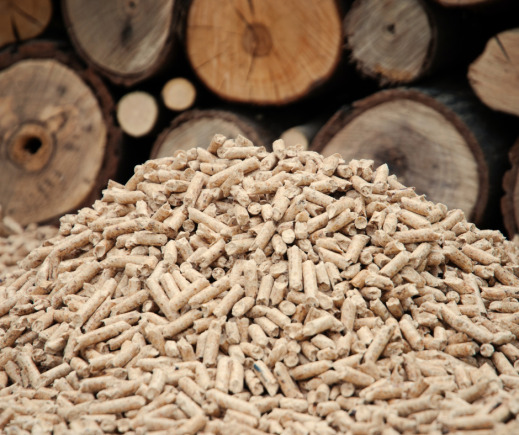Getting the best performance from Biomass

Getting the best performance from Biomass
- Blog
- End customer / Investor
The more heat produced, the higher the RHI payment
Following the Chancellor’s Spending Review and Autumn Statement in November it is now clear that the Renewable Heat Incentive (RHI) will continue to incentivise the use of renewable heat sources. Based on the take-up of the various renewable heat options in recent years, it seems equally clear that biomass will maintain its dominant position.
This situation reinforces the need to ensure that biomass heating plant rooms are operated and maintained in such a way that they meet as much of the heat load as possible. This is because RHI payments are based on the amount of heat generated, so the greater the percentage of the building’s heat load that is met by biomass, the higher the RHI payments and the faster the return on investment.
In parallel, of course, the system needs to be as efficient as possible so that the required heat is generated with the minimum use of fuel. Meeting these criteria requires attention to be paid to several factors.
Maintaning Efficiency
As with all heating plants, biomass systems need to be maintained in a way that ensures they continue to perform with optimum efficiency. However, there are some significant differences between biomass boilers and the more familiar gas or oil boilers.
The components of a biomass system contain more moving parts than gas or oil heating systems and, clearly, they are exposed to ash and dust. Dealing with this is relatively straightforward but may result in shorter service intervals so it is important to be clear who will be responsible for all aspects of running the biomass system. This may be someone on site or an outsourced maintenance provider.
On the grounds that this responsible person is unlikely to have specialist biomass expertise, it can also be useful to incorporate online monitoring that feed back key data to the equipment supplier.

Maintaining Control
In many projects the biomass boiler(s) will be included with other heat sources and, for the reasons given above, it is essential to ensure that the control strategy maximises the use of the biomass boilers.
For example, biomass boilers are often backed-up by gas-fired boilers, with the biomass boiler acting as lead boiler to meet base heat loads and the gas boilers firing to meet peak loads.
The control strategy therefore needs to reflect the characteristics of each type of boiler. Biomass boilers are not designed for rapid on/off firing so the control tolerances need to allow time for the biomass boiler to meet the set-point temperature. Fitting a buffer vessel between the boiler and the heating system will help to ensure optimum run times for the biomass boilers.
Another consideration is that if the back-up gas fired boilers are brought into play too quickly this may cause the biomass boiler to switch off, with the full load then switching to the gas boilers.
The Right Fuel
Biomass is a catch-all term for a number of different fuel types, the most common of which in the UK are wood chips and wood pellets. Selecting the most appropriate biomass fuel for each project is therefore critical as this will influence the overall performance and cost of ownership.
In this respect, it is important to note that while biomass boilers are capable of burning different types of wood fuel the overall system design will usually need to be specific to either pellets or chips. This means that if a system is to deliver the performance that has been predicted for it, it will need to continue to use the fuel type and quality for which it was designed.
This approach is reinforced by the fact that RHI audits include verification that systems have been installed in line with the original application, including appropriate fuel quality.
Additionally, RHI participants are required to ensure their fuel meets RHI sustainability criteria, delivering at least 60% savings on greenhouse gas emissions compared to the EU fossil fuel average. This means that changing fuel type could have a detrimental effect on emissions and result in failing the RHI audit.

For instance, there is a significant difference in performance between dry (well-seasoned) wood chips and those that have not been seasoned for so long and therefore have a higher water content. Therefore if chips are being considered it is important to ensure consistency in the type of chips that the supplier will provide.
In terms of price, wood chips are certainly cheaper than wood pellets but, because of their lower calorific value compared to pellets, higher volumes of fuel are required to achieve the same heat output. This means that fuel storage and handling requirements are generally more expensive, more complex and more expensive so this has implications for life-cycle costs. There may also be a requirement for more frequent fuel deliveries.
There is also some variation between different types of wood pellet, the highest quality being those that comply with the ENPlus A1 certification scheme, which uses the A1 grade specification in the standard EN 14961-2 for wood pellets. The ENPlus A1 scheme incorporates a number of important quality assurance measures, including sustainable sourcing and use of a delivery system that maintains the pellets in the best condition for optimum combustion performance.
There can be little doubt that we will continue to see an increase in the use of biomass boilers in commercial buildings. Furthermore, the continuation of the RHI will help to ensure they are actually used, rather than simply being installed to gain planning permission and then being left off for most of the time (as has been the case in the past).
As a result, building operators have a strong incentive to ensure their biomass systems are operating at maximum efficiency. Addressing the criteria discussed here, perhaps with input from specialist suppliers, is the way to ensure that.
